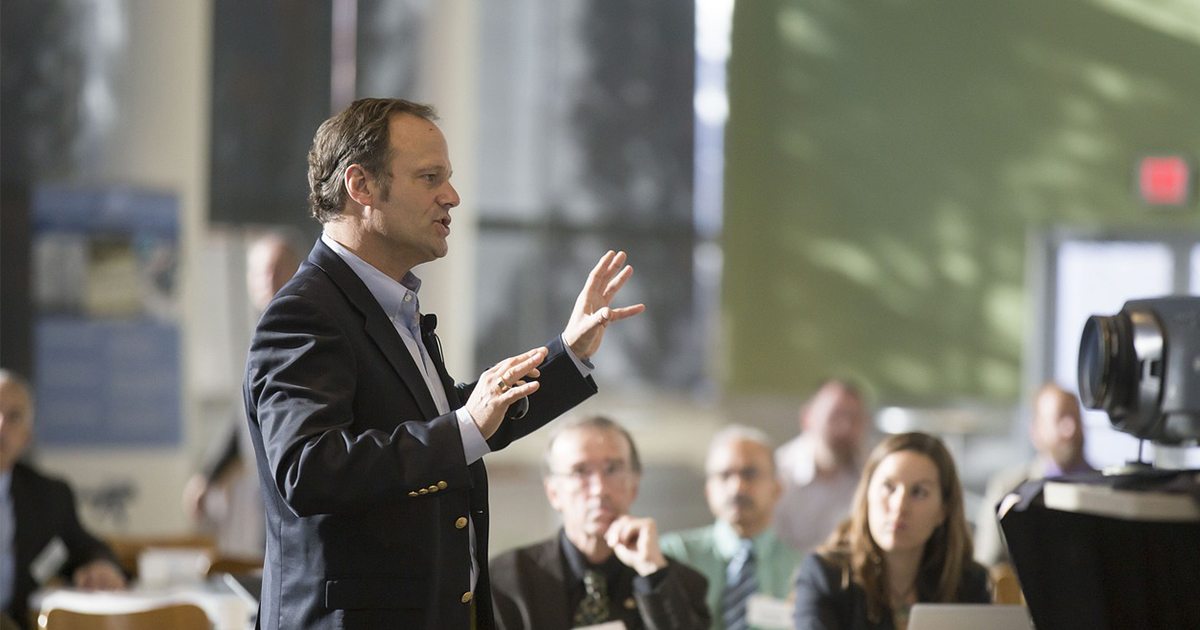Month: April 2013

Holding It Together While Living with Mesothelioma
Over the many years I have been fighting mesothelioma I often have the same question asked of me, “How do you hold it together?”
To be honest it is hard. I am trying to be strong for my family and friends, but I am afraid that any sign of weakness will let them down or show that I am not willing to fight to spend more time with them.
Others I’ve talked to who are mesothelioma survivors agree that it is hard to keep smiling when the doctors knock the positivity right out of us all, always giving the grim news on diagnosis that we have less than 12 months to live. Not only does that affect us, but it also affects our loved ones. They then feel they have to be strong for us and not show any weakness either.
I have known some people who have been diagnosed with mesothelioma seemingly ignore the fact that they are sick. This approach then makes it harder for the family because they think their loved one is hiding away and not facing up to the grim prognosis given. In truth most mesothelioma patients don’t ignore it or try to hide, they just don’t know how to deal with the diagnosis and believe this way they are being strong for everyone else.
For those of us who accept it off the cuff, we decide there and then that we won’t be beaten and put on our battle face. The only problem is that we forget to take it off and reach out. Then as our treatments wear us down, we believe we can’t let our loved ones know how bad we feel; we are ‘leading by example,’ we are ‘coping and fighting.’ Yet sometimes inside we do want someone to say to us ‘It will be fine,’ or ‘You’re just having a bad day.’ Instead we find we can’t share our worries with them for fear that any mention of the word mesothelioma will end the conversation. Our partners don’t want to think those bad days or those new pains are cancer related. Doing so means they may have to face up to their own worries, and their hold over their own emotions may fall.
Who Are We Being Strong For?
We are all being strong for ourselves, our family, our loved ones who mean more to us than life itself, but then we deny ourselves those bad days when we can’t cope. The longer we keep that battle face on, the harder it is to break down and say, “Hey, I’m not coping as well as you think.” And because we have that battle face, our families and friends do too, which means they can’t say it either.
Finding a balance where partners can be truthful and honest is difficult. So how do we break this chain reaction? I’m not sure everyone can. There are families that can face up to mesothelioma together and discuss it, they share the pain, the worry and the fight. Unfortunately, not everyone can do the same. Deciding to share your battle with mesothelioma in a way that works for you can help ease some of the emotional strain.
I started a journal at first, pouring everything out, but then I was afraid my husband would read it and think I was weak or I couldn’t cope, so I started a blog, which he does not read. To me it was a release to talk about my pain, anguish and life, and I knew others were out there were feeling the same. I hope my blog will tell them realize it is ok to feel this way or that pain can be normal. Maybe by reading what I have written, they too will find a release.
So how do I hold it together? All I can say is I just do.
The Link Between Mesothelioma and Working in Taconite Mines
Researchers at the University of Minnesota have confirmed a correlation between the risk of mesothelioma and the amount of time that workers spent in taconite mines. Mesothelioma is an aggressive cancer of the lining of the lung and abdominal cavity. It’s generally associated with exposure to another mineral fiber, asbestos, linking the disease to occupations where asbestos was used.
The findings which will be presented to the Minnesota Legislature were part of an ongoing 5-year, $4.9 million study of Taconite workers’ health.The researchers said that a person’s risk of getting mesothelioma increased by three percent for each year they works in a taconite mine. The study is potentially groundbreaking because the type of mineral fibers present in iron ore mining have not been previously linked to mesothelioma.
“One important finding of the work to date in that the risk of contracting mesothelioma is higher across the entirety of the Range among people who worked longer in the industry,” said Dr. Jeff Mandel, a School of Public Health environmental health expert and principal investigator of the study.”
The Minnesota Legislature commissioned the study in 2008 after data from the Minnesota Cancer Registry showed an apparent excess of cases of mesothelioma among Iron Range workers. The study’s objective is to determine whether dust-related lung disease, including mesothelioma, lung cancer and other non-malignant respiratory disease is related to working in the taconite industry.
The researchers found that the causes of death among taconite workers compared to Minnesotans as a group were higher than expected for mesothelioma, lung cancer and heart disease.
The researchers are still trying to determine if the increased risk of mesothelioma among taconite miners is a result of cumulative exposure to the microscopic mineral fibers present in taconite dust. They plan to do further data analysis in coming months.
Source: University of Minnesota School of Public Health Press Release

Mesothelioma Researchers at University of Hawaii Cancer Center Move Into State-of-the-Art Facility
Researchers at the University of Hawaii Cancer Center are well known for their groundbreaking research into the causes of mesothelioma, and for finding novel treatments to battle the rare, asbestos-caused cancer. Now the team has moved operations into a new environmentally green, $16 million, 150,000-square-foot cancer research facility, where the director of the center says by making the best use of the facility the researchers will “propel the UH Cancer Center to the forefront of cancer research.”
Michele Carbone, MD, PhD, the country’s premier authority on mesothelioma and director of the University of Hawaii Cancer Center, wrote in his message for the Winter 2013 newsletter, “we want to build a culture of success that revolves around teamwork, mutual respect, scientific integrity, and a spirit of humility.”
The team is hoping to build on the success of a study led by Carbone where they found that mutations of the BAP1 gene, which is involved in tumor suppression, might underlie mesothelioma in people with a strong family history of the disease. The study was designed to identify individuals at high risk of mesothelioma.
The new facility allows administration, researchers, and faculty to work in one facility. “This will allow us to better share knowledge and resources in a collaborative environment, where scientists, students, and staff work together cooperatively,” said Carbone.
The University of Hawaii Cancer Center is a National Cancer Institute (NCI) designated Cancer Center. The five-year designation not only brings recognition to UH as being one of the nation’s best cancer centers, but it also provides vital funding for continued research. The UH Cancer Center is one of only 66 NCI-designated cancer centers in the United States, and the only one in Hawaii and the Pacific region. Construction of the new facility was part of the agreement with NCI.
Carbone praised The Friends of the University of Hawai‘i Cancer Center for its support in advocating for the new building. Carbone said it was the Friends “perseverance that eventually generated the momentum and allowed us to overcome many barriers and be successful.” He added, “their support has been, and remains, invaluable to us. We would not be here without them.”
“We will make Hawaii the place where scientists from all over the world come to meet and establish collaborations to find new ways to prevent, diagnose, and treat cancer,” said Carbone.
The funding for the new facility was provided by the State of Hawaii.
Mesothelioma is a rare form of cancer that can form in the lining of the lungs, abdomen or heart which is known to occur as a result of exposure to asbestos. Often referred to as “asbestos cancer,” it’s highly aggressive and difficult to treat. Carbone has dedicated his career to finding an effective treatment for the disease.

SU2C Dream Teams and Industry Collaboration May Bring Treatments to Mesothelioma Patients More Quickly Than Ever Before
Organizers of the Stand Up To Cancer Scientific Summit 2013 are proudly boasting the successes of the Dream Teams funded through the organization. Formed in 2008 to “accelerate innovative cancer research that will get new therapies to patients quickly and save lives now,” Stand Up To Cancer funds teams of scientists to collaborate on cancer research projects that are critically important for finding a cure for mesothelioma and other incurable cancers.
“The results are in – it has been phenomenally successful,” said John A. Glaspy, M.D., M.P.H., Jonsson Comprehensive Cancer Center, UCLA, SU2C Executive Management Committee, of the conference and the success of the teams.
The Summit was an opportunity for the best and brightest minds in research to gather in one place and exchange ideas. Phillip A. Sharp, Ph.D, Nobel Laureate, Koch Institue for Integrative Cancer Research, MIT, SU2C Scientific Advisory Committee Chairperson, said of the summit: “It’s the place I want to be, the place I want to work, the place I want to collaborate.”
And, “Everyone who is not here is trying to figure out how to be here next year,” added Craig B. Thompson, M.D., Memorial Sloan-Kettering Cancer Center, SU2C Pancreatic Cancer Dream Team Leader. The reason, he said, is that “SU2C model’s vitality is evident in the Summit.”
The teams are working together, as opposed to competing, towards defeating cancer. The Dream Teams were formed to focus on a specific disease or a specific research method, but everyone agrees that through unprecedented collaboration the pharmaceutical companies can now get new therapies to patients more quickly than ever before.
In fact, according to William B. Nelson, M.D., Ph.D., Sidney Kimmel Comprehensive Cancer Center, Johns Hopkins University, SU2C Scientific Advisory Committee Vice Chairperson, “the speed of progress is truly remarkable.” Nelson said that in the past it could take upwards of twelve years and a billion dollars before any patients could benefit from a finding. Now, he says, the time is as short as three years.
Lewis C. Cantley, Ph.D., Beth Israel Deaconess Medical Center, SU2C PI3K Dream Team Leader, agrees. He explained that the Dream Teams discovered that when two drugs, from two different pharmaceutical companies, were combined they were “dramatically more effective” than individually. The researchers were able to convince the pharmaceutical companies to combine the drugs. He said that this collaboration resulted in accelerated results that “set a record that will be hard to break.”
SU2C has gained popularity through the televised fundraisers held every two years featuring live performances of recording artists and celebrities from film, television and sports who present key information to viewers about cancer. Cancer survivors are also featured as they document their journey through their diagnosis and treatment.
More than $262 million has been raised for cancer research since the first telethon aired in 2008. Since then, SU2C has made grants to nine multidisciplinary Dream Teams of researchers as well as to 26 young innovative scientists who are undertaking the fight to end cancer. The SU2C dream teams “pursue the most promising research, accelerating the discovery of new therapies for cancer patients and/or advancing efforts in cancer prevention research.”
One of the Dream Teams, the epigenetics dream team, comprised of Johns Hopkins researchers, was initially funded through SU2C with a $6 million grant. The team focuses on discovering new ways to eliminate cancer cells through the use of epigenetics. The genetics of cancer is important, but how the genetics are packaged and how the genes are turned on or off through chemical switches, known as epigenetics, is the primary focus of the research.
Stephen B. Baylin, M.D., Sidney Kimmel Comprehensive Cancer Center, Johns Hopkins, the Epigenetics Dream Team co-leader, said, “We have had extraordinarily promising results. If all this [continued results] comes to pass, then we will have suggested a major change in treatment for advanced NSCLC.”
Mesothelioma patients struggling to find effective treatments for the incurable, asbestos-caused cancer stand to benefit greatly from the amazing results of the SU2C Dream Teams. Continued funding, support and collaboration of these teams bring hope to the millions of Americans who battle cancer each year.
Sources:
- epigenetics dream team
http://www.hopkinsmedicine.org/kimmel_cancer_center/research_clinical_trials/research/su2c/what_is_epigenetics.html - Stand Up To Cancer Scientific Summit 2013
https://www.youtube.com/watch?v=QcWgDf5jdvE&feature=youtu.be

Overall Number of Cancer Survivors Increasing, Number of Mesothelioma Deaths Rising Slightly
After recovering from the initial shock of being diagnosed with mesothelioma, most patients turn their thoughts to their treatment plan. Their primary goal is to kill as many of the cancer cells as possible offering them a longer, higher quality of life while battling the disease. Ultimately, mesothelioma patients want to become cancer survivors.
ACS Reports Good News for Many Cancer Patients
Although most people associate cancer survivorship with the time after treatment ends, the American Cancer Society defines a cancer survivor as “any person who has been diagnosed with cancer, from the time of diagnosis through the balance of life.” And according to its recently released report Cancer Treatment and Survivorship Facts & Figures 2012-2013, an estimated 13.7 million Americans with a history of cancer were alive on January 1, 2012, and the ACS expects that number to continue to grow.
In fact, it estimates that by January 1, 2022, the population of cancer survivors will increase to almost 18 million. The ACS further defines survivorship by identifying three distinct phases: the time from diagnosis to the end of initial treatment; the transition from treatment to extended survival; and long-term survival.
The ACS reports death rates continue to decline for lung, colon, breast, and prostate cancers, which are responsible for the most cancer deaths. Since 1991, death rates have decreased by more than 30% for lung cancer in men, 40% for prostate cancer, and by more than 30% for colon cancer, breast cancer in women.
However, according to the ACS, a total of 1,660,290 new cancer cases and 580,350 deaths from cancer are projected to occur in the US in 2013. Close to 3,000 of those cases will be mesothelioma.
Mesothelioma Deaths Continue to Rise
In a separate report from the Minnesota Department of Health using statistics from the U.S. Centers for Disease Control and Prevention, the number of deaths from mesothelioma has slightly increased during the latest reporting period. The report covers mesothelioma deaths in the U.S. from 1999-2010. In 1999 there were 2,484 deaths, with a steady rise until 2010 where 2,745 deaths were reported.
The authors conclude that “despite the dramatic decline in asbestos use in the U.S since the early 1970s (down from 800,000 metric tons in 1973 to 1,100 tons in 2012) and implementation of more protective occupational health standards, asbestos remains present in millions of homes, offices, and industries and represents an ongoing potential exposure hazard to both workers and the public.”
Mesothelioma is a rare form of cancer typically affecting the lining of the lungs. Caused by exposure to airborne asbestos fibers, most cases of mesothelioma are diagnosed 30 years or more after exposure. The latency period can be as long as 50 years.
In 2011, Michele Carbone, M.D., Ph.D., director of the University of Hawaii Cancer Center, reported that more than 20 million people in the United States are at risk of developing malignant mesothelioma due to asbestos exposure. In addition, he reported that malignant mesothelioma mortality rates will increase 5 to 10 percent per year in most industrialized countries until about 2020.
Research Progress
With recent successes in cancer research and with many new initiatives, some mesothelioma patients are realizing longer survival rates and a better quality of life. The University of Texas MD Anderson Cancer Center is one institution that has been waging a war against cancer for years. The Center has over 30 specialists on staff that supports its multi-disciplinary approach to treating mesothelioma patients through its Mesothelioma Program. Most recently, MD Anderson started its Moon Shots Program “to dramatically accelerate the pace of converting scientific discoveries into clinical advances that reduce cancer deaths.”
In addition, other researchers have reported improved screening methods leading to early detection of mesothelioma as well as novel therapies for limiting side effects. Other breakthroughs have been made taking physicians closer to personalized treatment.

Free Mesothelioma Patient & Treatment Guide
We’d like to offer you our in-depth guide, “A Patient’s Guide to Mesothelioma,” absolutely free of charge.
It contains a wealth of information and resources to help you better understand the condition, choose (and afford) appropriate treatment, and exercise your legal right to compensation.
Download Now